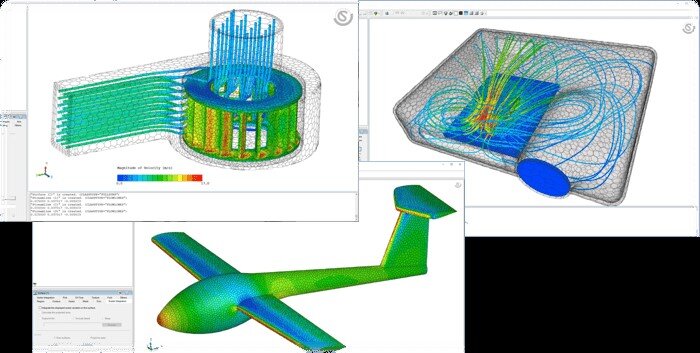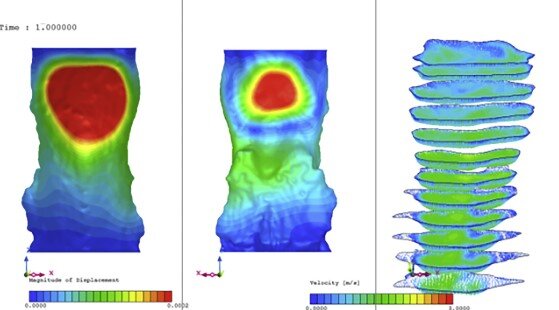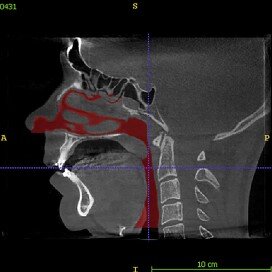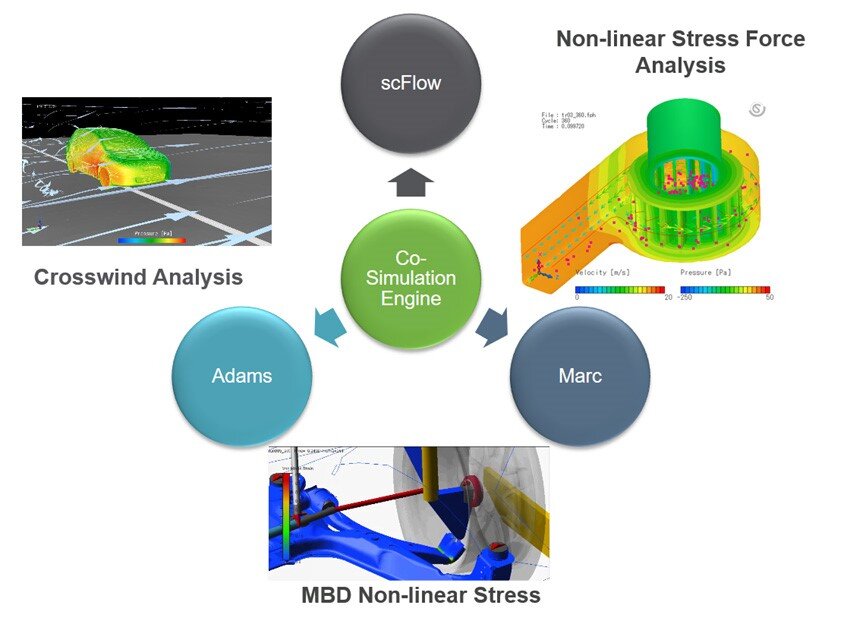FLUID-STRUCTURE INTERACTION (FSI): A PRACTICAL PERSPECTIVE
What is Fluid-Structure Interaction?
Well, it is a fascinating field of mechanics where fluid and solids are talking to each other in different ways. In solid mechanics, the structure is deformed under some external loads, some of them may be due to the presence of the Fluid such as pressure load imposed on submarines. On the other side of the problem, in fluid mechanics, these deformations occurred to the solid changes the flow field around the solid body in terms of velocity, density and other flow variables. This kind of interaction is called Fluid-Solid interaction, or in other terms, Fluid-Structure Interaction (FSI) where both systems are coupled. [1]
Figure 1: Cardiovascular Fluid-Structure Interaction [2]
Figure 2: Cloud cavitation about a finite-span stainless steel hydrofoil exhibiting multiple shedding events along the span due to the re-entrant jet instability and span-wise compatibility of the cavitation. [3]
Fluid-structure interaction exists in various forms in our lives; whether in nature like the wind interaction with the crops, trees, or even inside us such as the heart pump and valve dynamics in the cardiovascular system. In addition, this interaction between fluids and solids occurs in man-made objects at different levels of interaction such as submarines and sub-sea jumpers immersed in oceans, wind loading affecting buildings such as bridges, wind turbines, aircraft structures, oil and gas pipelines, and many other applications.
Is it possible to reach a general model for all applications?
Considering all these various applications, this arises very fundamental question: is it feasible to develop a general model to handle all these applications? Unfortunately, it is a quite tough task to achieve taking into consideration the complexity of both fluid and solid scenarios such turbulence, compressibility and more on the fluid side, and the non-linearity of both materials and contacts in solid mechanics. In addition to this physical complexity, there are other complexities regarding the mathematical formulation of the problem such as the classification of the partial differential equations that describes the fluid domain elliptic, parabolic, hyperbolic that needs different analysis. Moreover, another one is the proper modeling of the interface between the two domains especially when the interface is deforming which adds degrees of complexity to the problem [4].
Figure 3a: Ocean wind power generator impacted by a tsunami wave using MSC Dytran [5]
Figure 3b: Ocean wind power generator impacted by a tsunami wave using MSC Dytran [5]
Why do we need to classify the Fluid-Structure interaction problems?
Therefore, it is essential, first, to classify the degree of coupling between the two systems in order to reduce the complexity of the problem and build a relevant models [6]. In many applications, the solid motion in the fluid can be considered as a rigid body such as in internal combustion engines. In many other cases, the deformation of the solid is so small, so the coupled could be one directional; in other words, the flow field can be computed first, then the forces should be transferred to the solid and to be solved for the stresses and the displacements. However, there are various other applications where the deformations are affecting the flow field significantly, hence, these are deemed to be a strong coupled or two-directional coupling.
In general, the coupling can be summarized in 3 classifications of Fluid-Structure Interaction coupling:
Rigid Body Fluid-Structure Interaction
Can be calculated using only Computations Fluid Dynamics (CFD Analysis).
The solid body motion is to be considered in the CFD (such as internal combustion engines, gears in the gear box, boats motion).
One-way Fluid-Structure Interaction
The solid experiences very small deformation.
The flow field forces should be transferred to the solid region to be simulated in Finite Element Analysis (FEA codes).
No need for iterations between fluid and solid.
Some unique solvers can have an intuitive module to solve the FSI problem to the limitation of small deformations only. Cradle SC/Tetra is a master tool in this type of analysis.
Two-way Fluid-Structure Interaction
The solid experiences large deformations.
Iterations are needed between the CFD and FEA codes such as wing fluttering, and sub-sea jumpers.
Figure 4: two-way fluid-structure interaction using SC Flow MSC Cradle CFD
Figure 5: Gears lubrication simulation using SC FLOW MSC Cradle CFD
Figure 6: Bird Strike simulation using MSC Nastran
MSC Software provides extensive Fluid-Structure interaction packages
MSC Software provides a wide range solutions for various fluid-structure interaction problems from simple problems to strongly coupled systems. These solutions cover various industries where fluid-solid interaction is inevitable such as Aerospace, Automotive, Energy, biomedical, and other industries. Problems such as shock absorbers, flexible aircraft wings, cardiovascular valves and arteries, jet propulsion and wind turbines are modeled using MSC Software simulation tools.
Figure 7: MSC Cradle Fluid-Structure Interaction Simulation
In addition, MSC Software provides set of robust algorithms that implement different mathematical approaches that leads to reliable numerical results such as implicit or explicit schemes, monolithic or partitioned approach.
Figure 8 Fluid-structure interaction simulation of the upper airway in obstructive sleep apnea patients using MSC Cradle CFD simulation [7]
MSC Co-Simulation Technology
Depending on the type of analysis, engineers can use MSC solutions in two ways – Co-Simulation (applying multiple physics to the model simultaneously) or Chained Simulation (passing load case results from one analysis to the next). The MSC CoSim Engine has been developed in order to provide a co-simulation interface for the direct coupling of different solvers/disciplines with a multi-physics framework. This first version, readily available today, enables engineers to set up co-simulation models between Adams, Marc and scFLOW.
MSC Software Related Products
SCFLOW/SCTetra, MSC Cradle CFD solution.
MSC Nastran structural analysis.
MSC Adams for multibody dynamics.
MSC Dytran for explicit transient dynamics and Fluid-Structure Interaction.
Figure 9: Multi-system coupling using MSC Software Co-Simulation Technology
References
[1] É. Polytechnique, "Fundamentals of Fluid-Solid Interactions," École Polytechnique, 2020. [Online]. Available: https://www.coursera.org/lecture/fluid-solid-interaction/welcome-to-the-course-YR1Xu.
[2] M. Lab, Stanford University, [Online]. Available: https://cbcl.stanford.edu/.
[3] J. A. V. B. W. P. Y. L. Y. Samuel M. Smith, "The influence of fluid–structure interaction on cloud cavitation about a stiff hydrofoil. Part 1.," Journal of Fluid Mechanics, Vols. vol. 896, A1, p. 35, December 2019.
[4] T. Wick, "Modeling, Discretization, Optimization, and Simulation of Fluid-structure interaction," 30167 Hannover, June 20, 2018.
[5] "MSC Dytran," MSC Software, [Online]. Available: https://www.mscsoftware.com/product/dytran.
[6] O. Z. R. T. P. Nithiarasu, The finite element method for fluid dynamics, seventh edition, Elsevier Ltd, 2014.
[7] K. B. K. M. W. M. a. R. M. Kwang K. Chang, "Fluid structure interaction simulations of the upper airway in obstructive sleep apnea patients before and after maxillomandibular advancement surgery," American Journal of Orthodontics and Dentofacial Orthopedics, vol. 153, no. 6, pp. 895-904, June 2018.
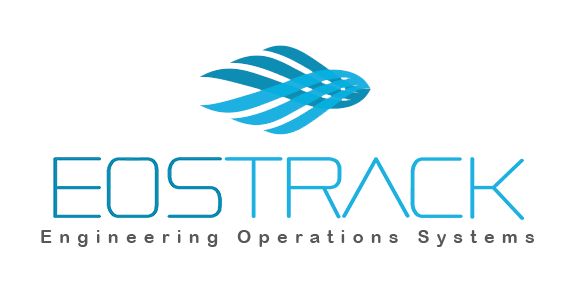

![Figure 1: Cardiovascular Fluid-Structure Interaction [2]](https://images.squarespace-cdn.com/content/v1/5f48be09157a55486ce826a9/1611155267369-B570TC35982XEY36Q45R/Fig1-Cardiovascular+FSI.jpg)
![Figure 2: Cloud cavitation about a finite-span stainless steel hydrofoil exhibiting multiple shedding events along the span due to the re-entrant jet instability and span-wise compatibility of the cavitation. [3]](https://images.squarespace-cdn.com/content/v1/5f48be09157a55486ce826a9/1611155310692-YSVVHE7FZPDV9HL1OI4Y/Fig2-CloudCavitation.jpg)
![Figure 3a: Ocean wind power generator impacted by a tsunami wave using MSC Dytran [5]](https://images.squarespace-cdn.com/content/v1/5f48be09157a55486ce826a9/1611155430434-BR6VACNPH8UVF8KQJAZT/Fig3a+-+Ocean+Wind+Power+Generator.jpg)
![Figure 3b: Ocean wind power generator impacted by a tsunami wave using MSC Dytran [5]](https://images.squarespace-cdn.com/content/v1/5f48be09157a55486ce826a9/1611155465996-KSP7B6WCB8O25CYP8FOZ/Fig3b+-+Ocean+Wind+Power+Generator.jpg)



